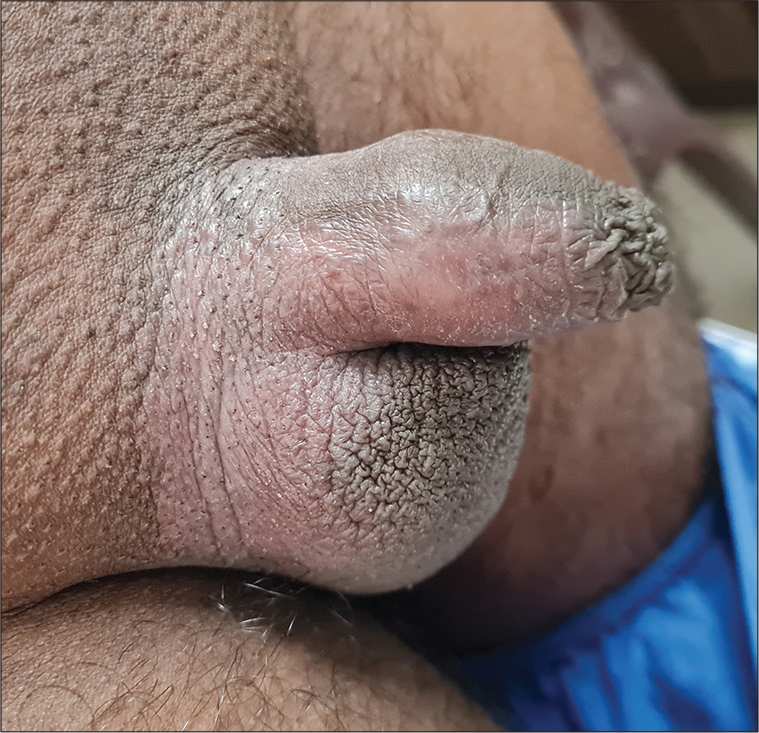Translate this page into:
Red scrotum syndrome

-
Received: ,
Accepted: ,
How to cite this article: Narayanan A. Red scrotum syndrome. CosmoDerma 2023;3:42.
A 20-year-old male presented to our clinic with scrotal and penile erythema [Figure 1] without scaling accompanied by burning sensation and pruritus since the past 2 weeks. He had applied topical clobetasol propionate 0.05% over the scrotum for the past 4 months for his scrotal pruritus and burning sensation. Based on the history and examination findings, we made a diagnosis of red scrotum syndrome. Topical corticosteroids have radically changed dermatology practice since the late 1950s. However, easy access to these drugs in countries like India leads to their misuse and abuse, resulting in red scrotum syndrome. The increased rate of topical absorption over the scrotum also plays a role in the development of red scrotum syndrome.[1] Physicians should be aware of this entity to make a prompt diagnosis. While no standardized treatment is available, variable response is seen with amitriptyline, doxycycline, pregabalin, gabapentin, and carvedilol.

- Scrotal and penile erythema without scaling accompanied by burning sensation and pruritus.
Declaration of patient consent
Patient’s consent not required as patient’s identity is not disclosed or compromised.
Conflicts of interest
There are no conflicts of interest.
Financial support and sponsorship
Nil.
References
- Red scrotum syndrome: An update on clinicopathologic features, pathogenesis, diagnosis, and management. J Am Acad Dermatol. 2022;87:614-22.
- [CrossRef] [PubMed] [Google Scholar]





